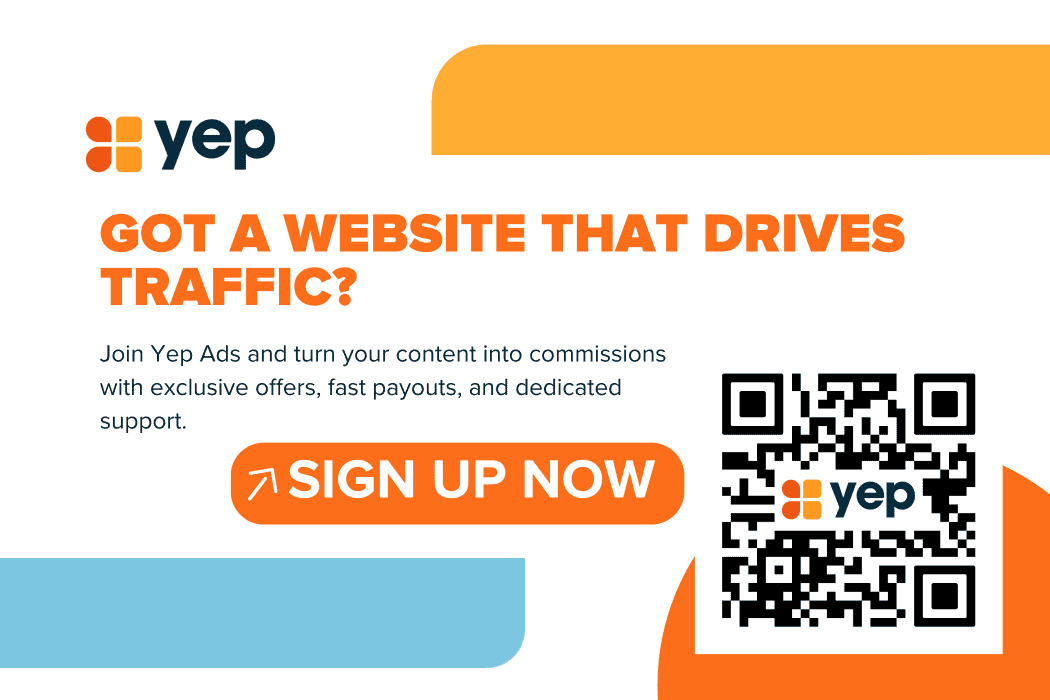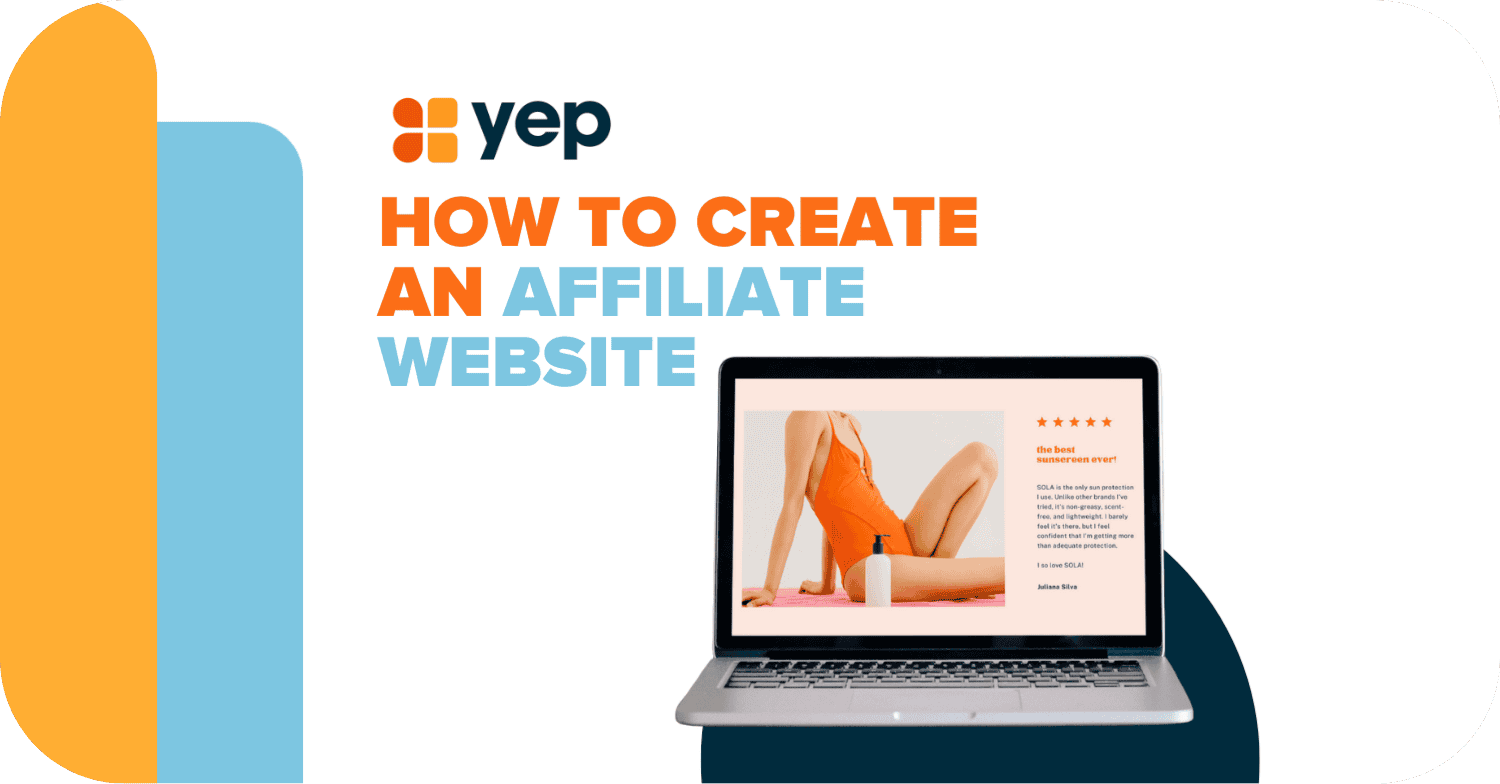
How to Create an Affiliate Website in 2026
Let’s be honest — launching a profitable affiliate site in 2026 is way more than buying a domain and pasting some links. But the good news? Done right, your site can become a steady income stream — even if you’re just getting started.
In this guide, we’re not just repeating generic advice — we’re sharing real insights from the Yep Ads team. Our affiliate managers, SEO specialists, and performance marketers have years of hands-on experience helping affiliates build, scale, and profit from their websites across multiple verticals.
Whether you’re a content creator, blogger, coupon site owner, TikTok creator, or someone who just wants to make a smarter income online, this guide breaks it all down for you. From picking the right niche to driving traffic that converts, everything here is tailored for affiliates. No fluff, no business jargon — just real advice that works.
And if you’re already thinking, “Do I need a huge audience?” or “Is this still worth it in 2026?” — short answer: yes. And no, you don’t need to be an expert coder or influencer to win.
Table of Contents
- ➡️ What Is an Affiliate Website?
- ➡️ Why Should I Create an Affiliate Website in 2026
- ➡️ Step-by-Step: How to Build Your Affiliate Website
- ➡️ What Content Works Best (And Why It Sells)
- ➡️ Smart Ways to Monetize and Get Programs
- ➡️ How to Drive Traffic (Without Paying for Ads)
- ➡️ Common Mistakes to Avoid
- ➡️ Affiliate Website FAQ
Key Highlights
- Affiliate websites earn you commissions by guiding users to take action through your links.
- You don’t need to be a tech expert or influencer to get started in 2026.
- Pick a niche you care about and that has good affiliate programs.
- Use WordPress, Shopify, or Wix with SEO and tracking plugins.
- Write helpful content like comparisons, reviews, and top lists.
- Include clear CTAs, pros and cons, and link your articles together.
- Join affiliate networks or agencies like Yep Ads for better offers and support.
What Is an Affiliate Website?
An Affiliate Website is a website built to promote the products or services of other businesses. The owner of an affiliate website earns commission on sales or other agreed actions (signups, leads, etc.) made through affiliate links. It’s built to guide a user toward a decision and rewards you, the affiliate, when that action happens.
A few examples of how it can work:
You write a helpful blog post or create a page around a product or topic, and include your unique tracking link from a brand or affiliate network. Someone clicks, makes a purchase, or signs up — you earn a commission.
It’s not just blogging — it’s content with a purpose. If you’re already doing product reviews, how-to tutorials, or top 10 lists, you’re halfway there. You just need to plug in the right affiliate programs and structure the site for conversions.
Why Should I Create an Affiliate Website in 2026
Even if you’re new, affiliate marketing is one of the most flexible ways to earn online, especially if there is a topic that genuinely interests you or you have some expertise in the specific field. Let’s say you are an online shop owner, and you are already selling furniture; you can become an affiliate for the related product, like decor items, place it on your site, and get commission while bringing extra value to your own website and customers.
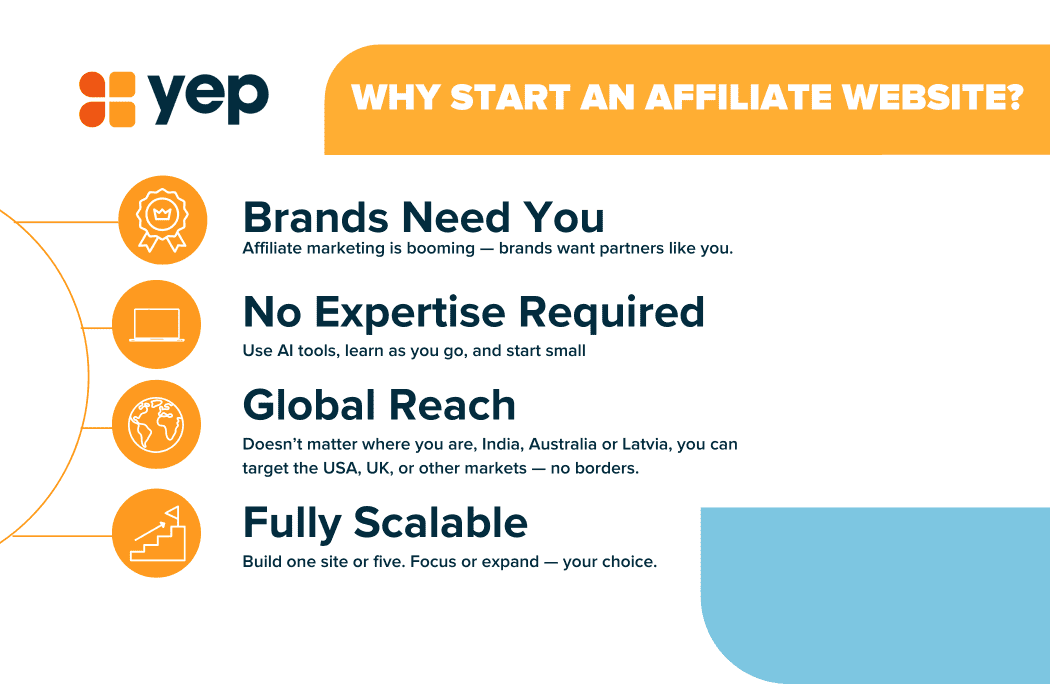
Image Source: Yep Ads Website
That’s why this is the right time to start an affiliate website:
- Brands need affiliates: With the rising popularity of affiliate marketing and proven wins of brands in various industries, more and more companies are investing in affiliates now. You’re a valuable channel.
- You don’t need to be an expert or have a huge team to build a website. With a lot of tools available and AI, there are a lot of things you can learn by doing. Start small, test, tweak, and grow.
- You’re not limited by borders: You can target GEOs like the USA, UK, or even Tier 2/3 countries, depending on your vertical, whether it’s e-commerce, lead gen, or nutra. Yep, Ads help with that.
- It’s scalable: You can build one site or five. You can go content-heavy or focus on one landing page. It’s completely up to you.
Real talk? Most top affiliates started with zero traffic, no fancy tools — just time, consistency, and testing.

Image Source: Yep Ads Website
Step-by-Step: How to Build Your Affiliate Website
1. Choose a Topic That Works For You
This matters more than you think. Pick a profitable topic and something that actually interests you. You will have to create content about your topic regularly, so think of some of your hobbies or what you enjoy learning about. The topic can be niche and specific; you can build out the entire website around the tips of growing tomatoes or gardening in general. The main thing is to establish authority on a topic and address
Use keyword exploring tools like Google Keyword Planner, Google Trends, Semrush, and Ahrefs to check demand. And don’t forget to check if there are good affiliate programs in that space (we’ve got plenty at Yep Ads).
2. Get Your Domain + Hosting
General SEO tip here is to get a domain name related to your topic, but it doesn’t matter that much; you don’t need to overthink this:
- Buy a domain (GoDaddy, Namecheap, Shopify, and Bluehost are the trusted sources to purchase a domain)
- Get hosting (Hostinger, Bluehost, SiteGround)
3. Build Your Site
You can try building out the website by yourself, and it’s absolutely possible using the latest tools and software, or you can hire a web designer or agency; it just depends on your budget and the amount of time you want to spend on it.
If you want to create the website by yourself:
- Install CMS (Content Management System) – Wix, WordPress, or Shopify are the most intuitive, simplest, and fastest to learn how to use.
- Set up the theme template (fastest way to create a website)
4. Set Up Your Affiliate Toolkit
Here’s what you need:
- SEO plugin (RankMath or Yoast SEO is free to use and a favorite of SEO specialists around the world).
These plugins help you optimize your pages and posts to rank better in search engines. They guide you on where to place your target keywords, how to structure headings, optimize meta titles and descriptions, and even create sitemaps.
- Link tracking (Pretty Links or ThirstyAffiliates)
Affiliate links can be long and messy. These plugins let you clean them up, track click-throughs, and manage all your links in one place. This also makes your links more trustworthy to users.
- Google Analytics + Search Console
Analytics helps you understand how people use your site — where they come from, what they read, and how long they stay. Search Console, on the other hand, shows how your site appears in search results, what people are searching for when they find you, and whether Google is indexing your pages properly. Together, these tools are your performance dashboard.
- Affiliate Disclosure page — don’t skip this.
It’s legally required (FTC rules in the U.S. and similar globally) to let readers know you may earn a commission. But it’s also a trust builder. A simple line like “This post may contain affiliate links. If you make a purchase, I may earn a small commission at no extra cost to you.” does the job.
Optional but Recommended:
Speed Plugin (e.g. WP Rocket): Makes your site load faster by caching content and optimizing scripts.
Schema Markup Plugin: Adds extra context to your content so search engines can show rich snippets (like star ratings or product info).
CDN (Content Delivery Network): Services like Cloudflare improve load speed by caching your site on servers around the world. Great for international traffic.
5. Create Content That Converts
This is where things get fun — and where the money starts to come in. Great content isn’t just well-written. It is trendy content, or it solves a problem, earns trust, and guides people toward taking action (clicking your link, making a purchase, signing up).
A few content formats examples to get started:
“Top 5 [Product] for [Audience]”
Example: “Top 5 Budget-Friendly VPNs for Students” — this helps readers compare options quickly and gives you space to include multiple affiliate links.
“[Product A] vs [Product B]: Which One’s Better?
”These perform really well because people searching for comparisons are close to buying. Be honest, highlight key differences, and help them make a confident choice.
“How I Used [Tool] to Fix [Problem]”
Example: “How I Used Jasper AI to Write My First Affiliate Blog in 1 Hour.” This is real, relatable content that builds trust fast.
Make sure to include:
- Pros and cons (people love quick summaries)
- Personal opinions (especially if you’ve actually used the product)
- CTAs like “Try it here” or “Grab the deal”
- Comparison tables or visuals to make things easier to skim
Advanced tip: Create content hubs — one core guide + multiple supporting articles to dominate a niche on Google.
One main pillar post — e.g. “The Ultimate Guide to Budget Travel Tools”
Multiple supporting articles — e.g. “Best Travel Backpacks Under $100,” “Top Budget Booking Apps,” “Travel Insurance for Backpackers”
Link them all together. This helps your site to build authority on the topic and sends signals to search engines like Google to reward your source with higher rankings (the higher rankings, the more traffic you get, and more traffic means more potential leads and consumers, more link clicks, which means more commissions).
6. Find Affiliate Programs
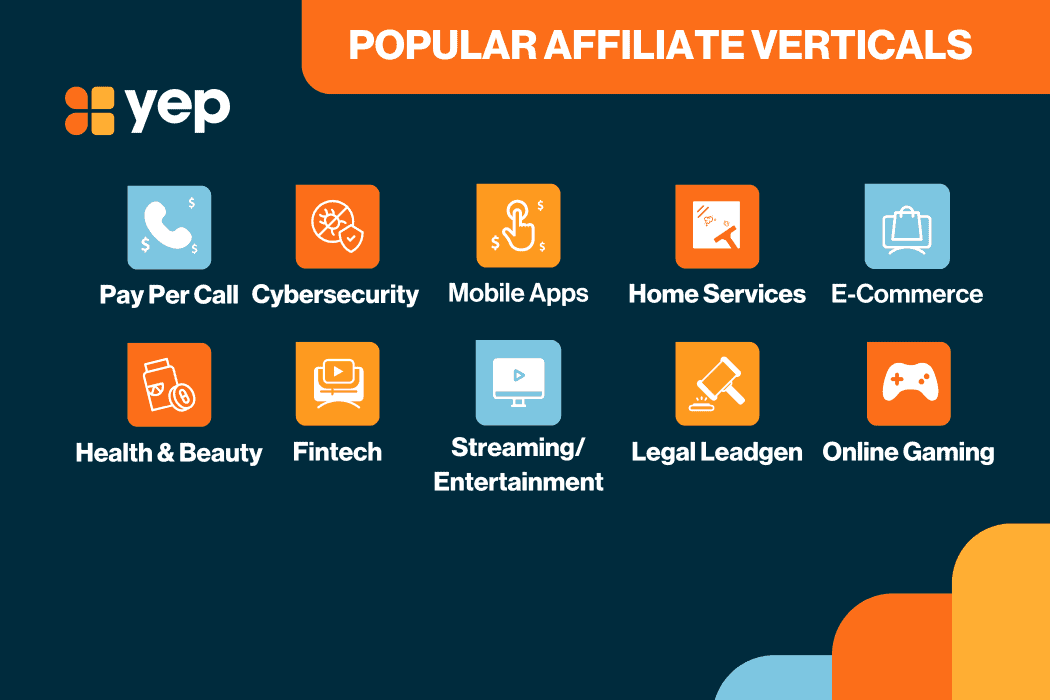
Image Source: Yep Ads Website
Now that your site is up and your content is flowing, it’s time to connect with the offers that will make you money. Here’s how to find affiliate programs that match your niche, your audience, and your content style.
Start with:
Yep Ads — we’ve got exclusive offers you won’t find elsewhere.
Our agency offers access to exclusive, high-converting campaigns. Whether you’re interested in running programs in cybersecurity, mobile apps, finance or home improvement, we’ll help match you to the desired vertical. Plus, we offer dedicated support and strategy help.
Look directly at brand websites for private programs, or research and team up with affiliate agencies and networks.
How to look for private programs directly:
Research the brands in your vertical. Check the footer of brand websites for links like “Affiliate Program” or “Partner With Us.” Reach out to brands directly, negotiate the commission rates and payout terms if you love their product and think it fits your content.
Why do Some Affiliates Prefer Working with Agencies?
Affiliate agencies like Yep Ads often have private deals with brands that aren’t available on public networks. These offers usually convert better and come with higher payouts. If any questions occur, instead of a generic help center, agencies help you troubleshoot and scale, and provide ongoing support any time you need it. An affiliate manager can actually guide you based on what’s working across thousands of campaigns. Instead of getting paid from 10 different networks or brands with 10 different payout minimums, agencies often bundle your earnings and pay you faster and more reliably. For example, some brands might only be able to pay you every 1-2 months or have set a minimum payout (will pay only every 200$).
The key is to find the programs that resonate best with your audience and can be useful for them.
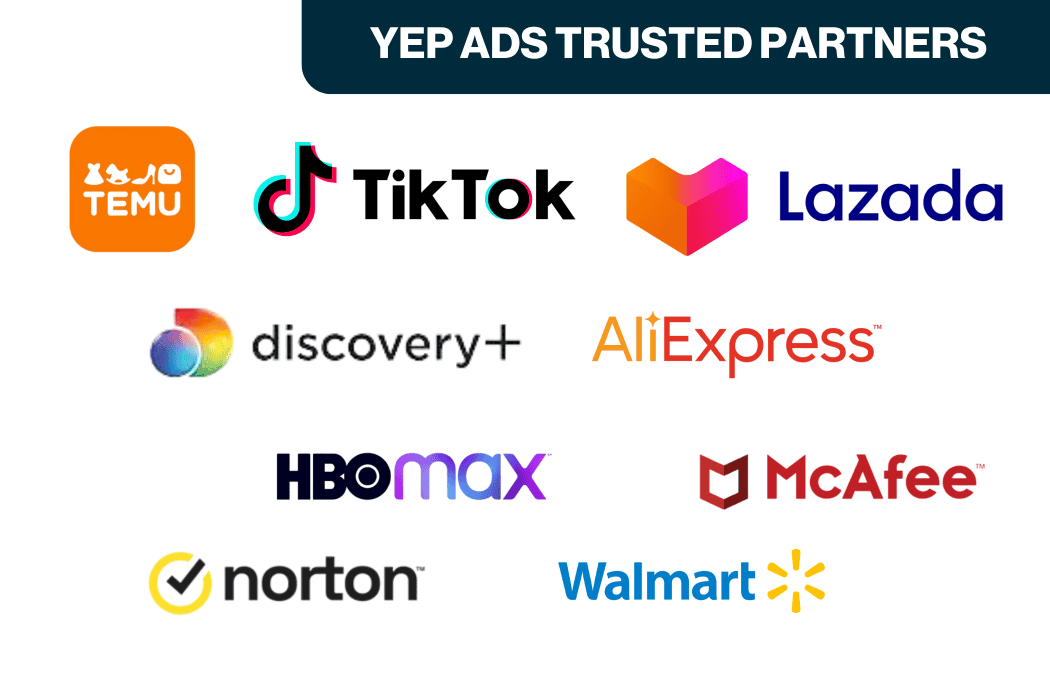
Image Source: Yep Ads Website
What to look for in a program:
- EPC (Earnings Per Click): How much affiliates typically earn per 100 clicks. Higher EPC usually = higher converting offer.
- Cookie Window: How long you still get credit for the sale after someone clicks your link. (7 days? 30 days? Lifetime?)
- Payout Model: Are you paid per sale (CPS), lead (CPL), or action (CPA)? Choose what fits your niche.
- Approval Requirements: Some programs approve instantly, others require a manual review — especially for finance, health, or sensitive verticals.
What Content Works Best (And Why It Sells)
You can have the best affiliate offer in the world, but if your content doesn’t click with your audience, you won’t earn. Good content builds trust, solves problems, and makes the reader feel like they’re in the right place.
Let’s break it down for affiliates:
- Best-of Lists: High search volume, low effort. Great for new sites.
- Comparisons: Buyers close to converting LOVE these.
- Tutorials & How-Tos: If you can solve a problem with an affiliate product, do it.
- UGC-Style Reviews: Add photos, personal stories, or real-world usage — makes it feel authentic.
- Bonus tip: Once you’ve written a solid blog post, don’t let it sit there. Reuse it:
- Turn it into a Pinterest infographic
- Record a short TikTok summary
- Post it as a Twitter/X thread
- Share tips from it on Reddit or Facebook groups
- Repurposing gives your content more life, multiplies your reach, and helps you show up across multiple platforms without starting from scratch.
- No matter which format you use, focus on being helpful. If someone walks away with an answer — and trusts your recommendation — the click will follow.
Smart Ways to Monetize and Get Programs
Here’s the deal: not every affiliate program will work for your content or audience. That’s why smart affiliates test a few before going all in.
Instead of locking yourself into one agency, explore what’s out there. Look for programs that offer recurring commissions (like SaaS tools), flexible payout options, and solid EPCs (earnings per click) so you know they actually convert.
At Yep Ads, we’ve got access to exclusive offers that aren’t listed on public agencies — and we’ll help you pick the right ones based on your niche and GEO. We work with top-performing verticals like VPNs and cybersecurity, health and wellness, finance, home services and more. And we don’t just give you a link — we help you optimize it so you can earn more, faster.
How to Drive Traffic (Without Paying for Ads)
Traffic is the fuel of your affiliate website — no clicks, no commissions. While paid ads can work, they’re not beginner-friendly and can get expensive fast. Instead, focus on these organic traffic strategies that actually work (and don’t break the bank):
SEO (Search Engine Optimization) is still king. Still the most powerful free traffic source for affiliates. It’s all about getting your content to rank in Google when someone searches for something you’ve written about.
Combine it with:
Pinterest (especially for home, beauty, lifestyle)
Great for visual niches like home, beauty, DIY, and lifestyle. Create eye-catching vertical pins that link back to your blog.
- Use Canva to design pin graphics
- Include keywords in your pin titles and descriptions
- Pin consistently and join group boards in your niche
Works amazingly well if you’re really bringing value and contributing. Don’t drop affiliate links — drop value.
- Find subreddits related to your niche (r/personalfinance, r/digitalnomad, r/skincareaddiction)
- Answer questions and link back to helpful content when it makes sense
- Be human — Redditors can smell self-promotion a mile away
Email (start collecting addresses from day one)
Start building your list early — even 20–30 subscribers can be valuable.
YouTube
Second largest search engine — and your video doesn’t have to be fancy. Think tutorials, comparisons, and screen-share walkthroughs.
Build traffic slowly and steadily. Pick 1–2 channels and post consistently for 3+ months. Don’t try to do everything at once — just stay focused and helpful. Google (and your audience) will notice.
Common Mistakes to Avoid
- Picking a niche with no monetization
- Relying only on one traffic channel
- Writing generic content that doesn’t answer real questions
- Skipping tracking — you can’t grow what you don’t measure
- Giving up too soon — most sites take 3–6 months to gain traction
Image Source: Yep Ads Website
Affiliate Website FAQ
- How much can I realistically make?
$50–$500/month is common early on. Scale from there with traffic + better offers.
- Do I need to be on social media?
It helps, but isn’t required. Many successful affiliates rank via SEO alone.
- Can I do this on the side?
Absolutely. Most publishers start part-time before scaling.
- What’s the best GEO to target?
Depends on the offer. Yep Ads will guide you on which offers work in which regions.
You Might Also Like:
If you enjoyed this post, you might also like these articles we picked for you:
- How to Create Affiliate Links (The Smart, Simple Way)
- What Is Affiliate Marketing? A 2026 Full Guide
- Performance Marketing vs Digital Marketing: Which One Drives Results?

